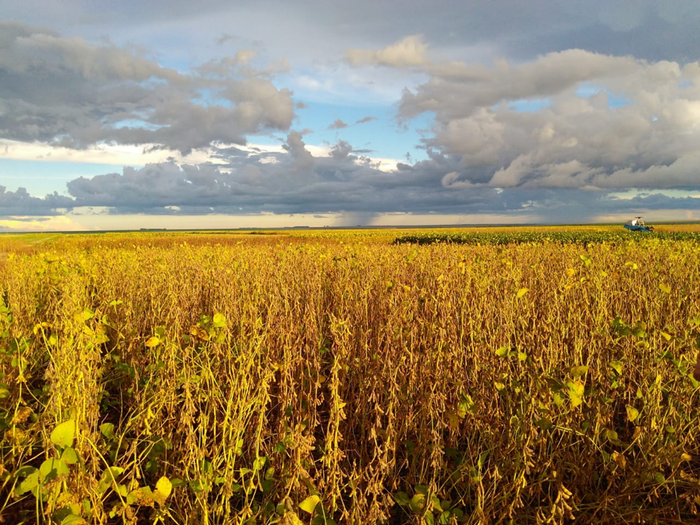
Brazil’s earliest soybean plantings -- that took place when the weather was dry last year -- are resulting in lower yields. However, for the next several weeks we expect to see yields return to normal for the 90% of soybean farms that were planted later, as rains became more frequent.

Soybeans near Rondonópolis, Mato Grosso, Brazil.
“The weather this year is very different,” says Gabriel Dognani from Ingu Farm, a farm of around 30,000 acres located in Rondonópolis, Mato Grosso state. “The rain had a late start and was irregular, so the first harvest we did was not very good.”
As we mentioned in our first blog post Brazil has seen ups and downs related to planting both corn and soybeans, starting in mid-October. Back then, the problem was the lack of rain; nowadays it’s the opposite. In some locations it rained above average, interfering with plant germination in some cases.
While the weather will cause some lower yields in specific regions, high prices incentivized farmers to plant 3.4% more acres of soybeans this last year, so the net effect of lower yield and higher production is probably a wash.
Below you can see how production compares from last year to the five-year average in key soybean-producing countries.

According to CONAB (the government’s food supply and statistics agency), the erratic weather is causing both trading companies and farmers in Mato Grosso state to be cautious when negotiating futures contracts.
Optimistic farm profit outlook
Even so, with the expected return to more normal weather patterns, the agency (CONAB) also expects optimistic outlook for farm profits, due to high Chinese demand for grains and the strength of the dollar (weaker Reais). The Brazilian market has heated up due to economic growth, increase of meat production to export, and the biodiesel mix that is added to diesel oil; it’s going from B12 to B13. Soy oil is the main element of this biofuel and this 1% increase of the mixture - from 12% to 13% - in diesel oil requires an additional 3 million ton of soybean to produce. That will in turn lower stocks, and therefore keep prices high in 2021.
Dognani estimates that around 12% of his area was affected by the poor weather. “But we always plant 10 different varieties of soybean, such as short-season and longer season varieties, to shield from weather risk. Since the rain has been picking up, we expect the harvests from later on to be much better and to recover, having an overall good harvest.”
About the Author(s)
You May Also Like






